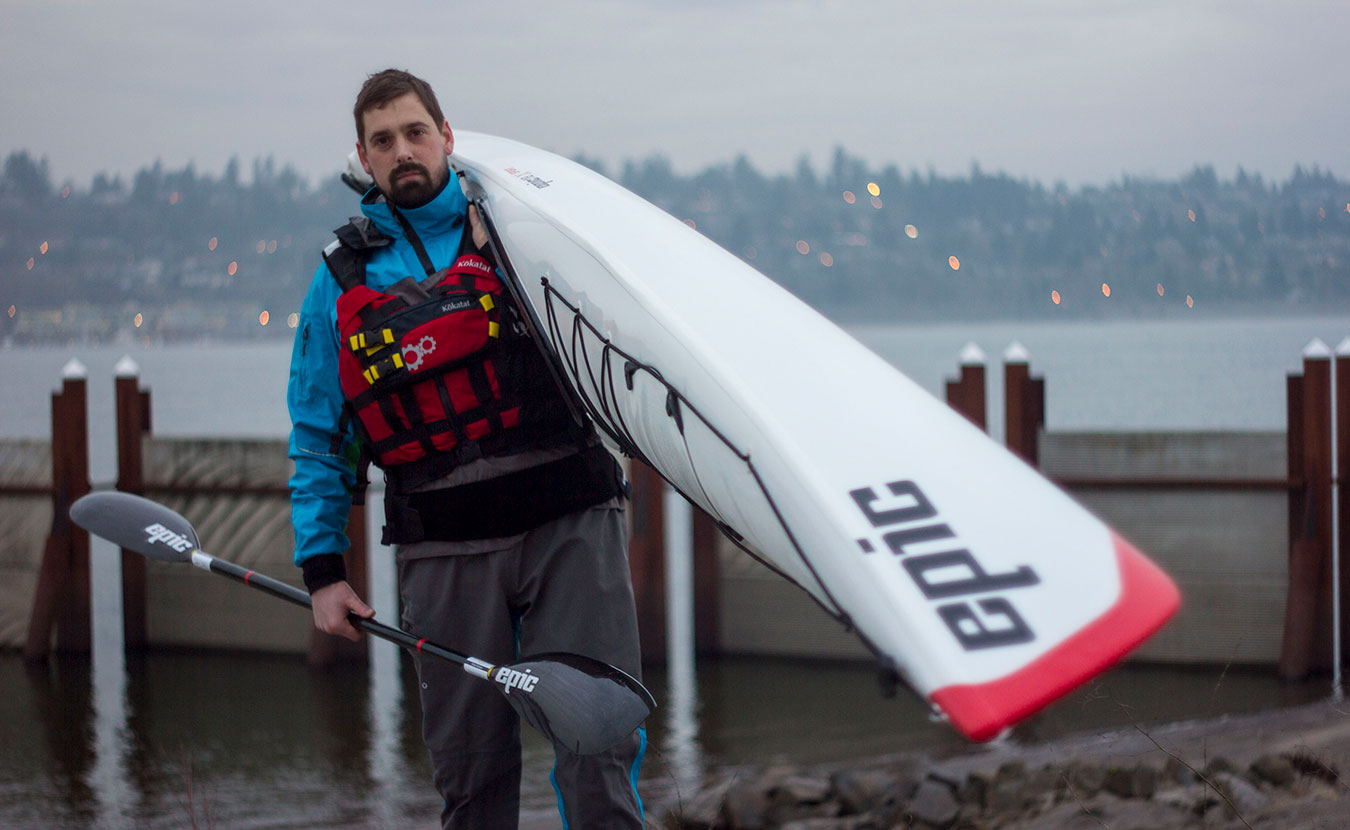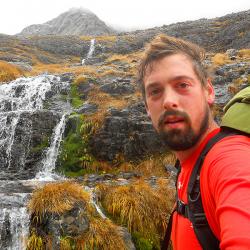I first attempted to paddle the length of the Mississippi River in 2013 when I was 27 years old. It didn’t go well.
I’d been traveling the world for years — which changed my life for the better in more ways than I can describe here — and I wanted to start my own adventure company that would help others get out and explore. Hosting an adventure that traveled the entire length of the Mississippi River immediately came to mind. After all, it had three important requirements: difficulty, accessibility, and, of course, affordability. The event would raise money for charity and offer regular folks on a tight budget an adventure they’d never forget.
But I had to do it first.
I had only been in a canoe once — during a college spring break — and we sank that canoe.
I met up with an old friend in Ellettsville and talked him into joining me on the test run. We barely researched our newfangled plan, purchasing only two massive navigation charts that barge captains use to maneuver large ships up and down the Mississippi. Not only are these books not helpful for maneuvering a canoe, they’re about the size of the average coffee table and weigh at least a metric ton. Also, these charts mapped out only the river south of Minneapolis, leaving us clueless about the first 500 miles of river that comes before it. It was enough for us.
Next step? We needed equipment. I jumped online, and within a week I had bought two worn-out canoes, a set of lifejackets, and a smattering of random paddles — all for less than $300. The first canoe was easily 30 years old, made of fiberglass, and had been repainted so many times there was no telling the original color. When I bought it, the canoe was a mix of lumpy forest green and variations of gray camouflage made by spray painting around different types of leaves, the seats were panels of rotten wood, and there were numerous leaks in areas where previous owners had patched holes. The other canoe was heavier and, at only 12 feet long, much shorter than the 18-foot fiberglass boat. Made of Royalex plastic, it had been sitting in the sun so long that the bottom of the boat had become a series of rolling 2-inch waves from bow to stern. Over the next couple of weeks, we readied our gear. I patched the holes in the fiberglass boat and painted it like an American flag. To finish the look, we placed a sofa chair in the large canoe because we thought it looked funny. I rented a box truck, and before long we were driving north to Minnesota.
It was May 1, 2013, and Minnesota’s spring melt was late. Lake Itasca (the source of the roughly 2,300-mile Mississippi River) was still frozen over. We had known there would be snow, but frozen over — that was a problem. A park ranger said he’d been working there for 26 years and had never seen such a late thaw. He explained that areas of the river that pass through lakes and large wetlands slowed by shallow reed beds would still be frozen, too, and that we should come back later. That night we camped in the box truck (which, due to the weather, was more like an icebox) and discussed our options. We eventually decided to put our boats in the water at Grand Rapids, Minnesota, over a hundred miles downstream and past the frozen sections.
The river here was flat and the riverbanks were almost entirely wooded, so we explored small riverside towns, checked out dams and bridges, stopped to see historic sites, and jumped into every abandoned houseboat we came across (which was quite a few). We camped every night onshore, hopping off of the river to say “hello” to river folk and ask them to refill our water jugs or, sometimes, for a place in their backyard to sleep for the night. I loved the physical challenge of the daily routine and the simplicity of knowing that my only job was to see what’s around the next bend in the river.
We had terrible weather. Storms would come up, bringing powerful waves and headwinds, but I gladly pushed through. And even though the river is dammed more than 40 times, it’s still wild and uncontrollable. Every day was a different jaw-dropping sight or experience that left us exhausted but smiling, such as paddling within a few feet of six bald eagles sitting on a partially submerged tree. We would average 30 to 40 miles per day, then find a camping spot and light a fire before the sun went down.
Even now, I describe the wildlife, views and vistas, annoying insects, and scenery of the Mississippi River as nothing you probably haven’t seen before — except you’ve never seen so much of it. Take the insects. Clouds of gnats and mosquitos were so large when they passed through camp in the evenings, any attempt at making dinner was promptly ruined and we’d tuck away in our tents for the duration. And, while fish jumping out of the water happens in many rivers and lakes across the country, when it happens on the Mississippi River, it’s on a whole new scale. Asian carp in the Mississippi can be four feet long, jump out of the water at shocking speeds, and run in schools numbering in the thousands! When our paddling scared one of these schools, they’d jump out of the water, often hitting our boats. One hit the side of my canoe so hard I had to brace myself to keep upright. I later found blood and scales on the side of the canoe where it had hit.
The most startling run-in with wildlife was when I passed a tree floating in the river hundreds of yards from shore. It seemed like a coyote might have been swept into the river and, while trying to climb onto the floating tree, had been stuck-through by a large splinter. It had obviously fought hard to remove itself. There were gnashes in the tree and it seemed the coyote had died while biting at it. I’ll never forget the expression on its face — even after death it had the look of sheer panic. It humbled me. I saw a life the river had taken and took it to heart.
It’s hard to explain the grandeur and enormous power of a river. Facts about flow, width, and depth don’t do it justice. But feeling a 30-mile-per-hour headwind while sitting in a 12-foot chunk of gnarled plastic three miles from shore is one way to get a sense of it. At its widest, the Mississippi River spans 11 miles and can be 200 feet deep. Its tributaries cover over 1 million square miles of land, so it’s safe to assume that the creeks and streams near many of the people reading this story lead to the Mississippi River.
Over the first three weeks of our trip, the river slowly wore at us. In my daily log, I mentioned strong headwinds, our biggest challenge, every day but one. It took us three days to pass through the 21 miles of Lake Pepin, Minnesota, just southeast of Minneapolis. And, even then, the headwinds were so strong we made it only by getting towed by a local in a motorboat. At this point, the relationship between my partner and me became strained, too. He was a quiet guy, so when he told me he was struggling with exhaustion on the tough days and boredom on the better days, we tried passing the time by playing loud music while on the river and stopping more to enjoy ourselves. He was in the longer and faster boat and, several days in a row, he paddled so far ahead of me that I wouldn’t see him for hours on end, which was dangerous: A few times, large waves threw me overboard.
We had a heated argument one night in a quiet campground in Iowa. By morning, he was gone. He’d taken most of the gear with him and left the other canoe. I called him again and again — no answer. After a few hours, I called his family back in Indiana to inform them I didn’t know where he was. His mother explained that since the very beginning he had planned on quitting the river in Iowa. I was at a loss, half infuriated and half heart-broken and less than halfway down the river. I hadn’t considered paddling the river alone, and didn’t want to. But I chose to keep going. I quickly found a local charity and donated the slower canoe, sofa chair, and any extra gear and got back on the water that afternoon. I let out my anger and frustration that day by paddling 50 more miles before sunset.

Waterford painted one of the canoes like the American flag. Pictured here, they are nearing the Twin Cities in Minnesota. | Courtesy photo
Days later, a storm pushed me ashore. I walked my canoe the entire day, barefoot through the shallows, making it only six miles. I was exhausted both mentally and physically. Loneliness had come over me and I hit a low point. I wasn’t enjoying myself, so I decided to change my trip to make it more comfortable. I went ashore near Cape Girardeau, Missouri, had a nice meal, and went for a walk. I came across a used-car dealership. Before I knew it, I had bought an old Ford Taurus wagon and was driving back to the riverside. I immediately felt better. I was sitting, dry and comfortable, in a heated vehicle and decided that the rest of the trip was going to be for pleasure.
The next day, I left my boat behind, drove south, parked the car, hitchhiked back to the canoe, and then paddled downriver to the car. I would do this day in, day out for another three weeks until I hit New Orleans. Having the car offered me the freedom to get off the river when I needed a break and thereby better appreciate the times on the water.
I’m 31 years old now, with five more major expeditions under my belt since the river. But I can easily say this trip tested me more than any other. It was physically challenging from the start, and then, with the added twist of going solo, it turned into a mental challenge I wasn’t prepared for. And it’s partially because of these challenges that I’ve decided to do it again — this time in a kayak to set the new source-to-sea speed record. I’ll be traveling solo, but I’ll have an on-shore support team.
In the years since that expedition, I’ve been paddling every chance I get in rivers and lakes all over the country, including a section of every river in Indiana south of Indianapolis. I’ve also been studying up on the correct gear (no sofa chair, for one) and honing my kayaking skills in hopes that this time will be better, smoother, and without as many hiccups as the first time. And although there wasn’t a single person that signed up for my hosted paddle of the Mississippi River, I feel that if this trip is a success, I’ll have shown that anyone can do it, or at least I’ve inspired them in some way.
You can follow along via the “Live Tracking” page at RaceToTheGulf.com. My time to beat is 42-days, and I have no doubts that paddling the Mississippi River will, once again, be the toughest adventure of my life.
[Editor’s note: Michael Waterford will periodically be updating us from his trip, so check back with Limestone Post in the weeks to come.]





No Replies to "From Source to Sea on the Mississippi — in a Canoe"